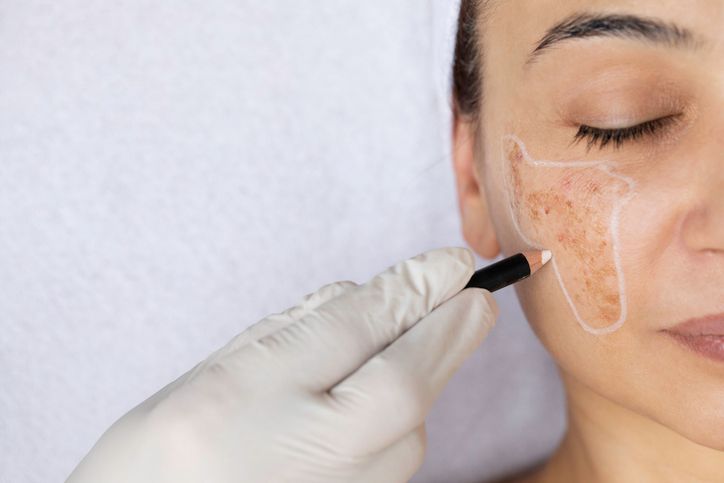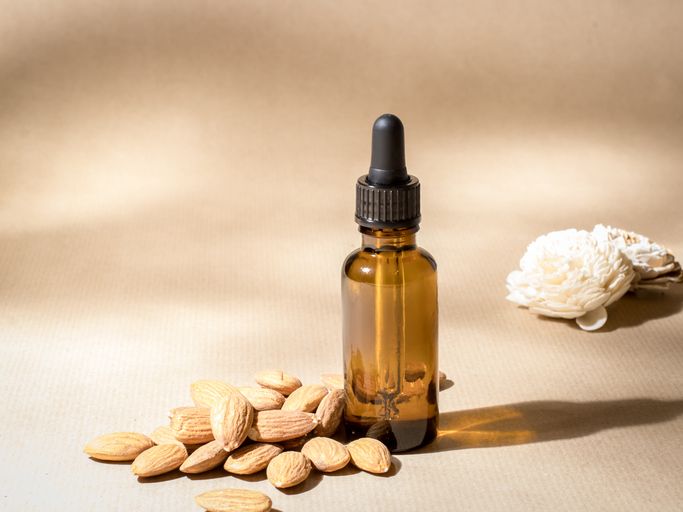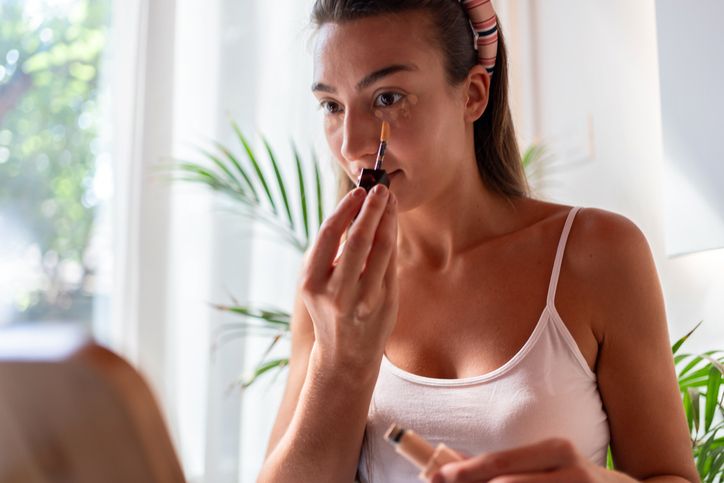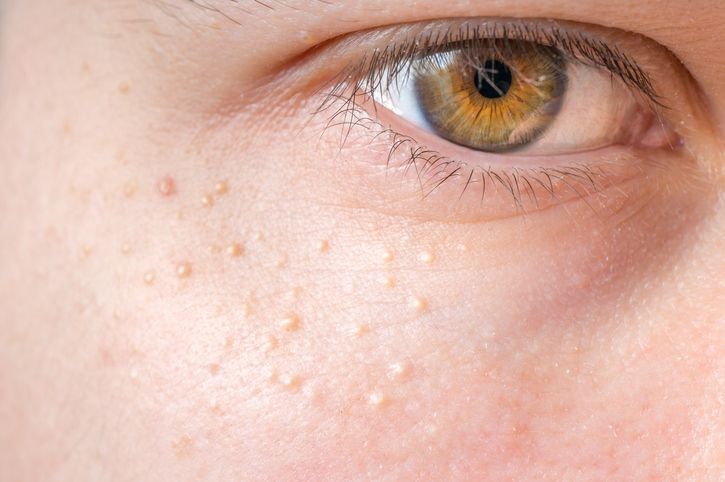- Home
- Trend
- Weight Loss Strategies
- Acne Tips
- Hair Health Information
- Blemish Removal Tips
- Acne Scar Removal Tips
- Muscle Building Techniques
- Intimate Care Tips
- Postpartum Intimate Care
- Eye Bags Wiki
- Tips for Face Slimming
- Secret of Permanent Hair Removal
- Breast Enlargement Tips
- Cure to Snoring
- Marionette Lines
- Skin-Tightening Secrets
Facial scars can be a source of frustration, affecting not only our skin’s appearance but also our self-esteem. Whether caused by acne, injuries, burns, or surgeries, scars form as a natural part of the healing process. The big question many ask is: Will pimple scars go away on their own? The answer depends on the severity of the scar and the treatment methods used.
The Psychology of Facial Scars: Why We Obsess Over Them

Scars on the face often carry an emotional weight beyond their physical appearance. Many people feel self-conscious about pimple scars, especially if they are deep, raised, or discolored. Society's perception of flawless skin, fueled by social media and skincare advertising, makes us even more aware of imperfections.
However, it’s important to recognize that scars are a natural part of healing. The skin repairs itself by producing collagen, but sometimes, excess or insufficient collagen leads to hypertrophic scars, keloids, or depressed scars. Understanding why scars form can help us choose the right scar treatment and manage our expectations.
Scar Treatment Breakdown: From Mild to Severe Cases
There’s no universal solution for face scar treatment, as different types of scars require different approaches. The severity of pimple scars depends on factors like depth, size, skin type, and healing response. Some scars fade over time, while others become permanent if left untreated. Understanding how scars progress and what can worsen them is essential for choosing the right treatment.
Mild Scars and Pimple Marks
Mild scars are typically superficial, appearing as slight discoloration or faint textural irregularities rather than deep indentations or raised marks. These often result from post-inflammatory hyperpigmentation (PIH) or post-inflammatory erythema (PIE), which occur when acne triggers excess melanin production or damages blood vessels.
• Appearance: Mild scars usually manifest as red, pink, brown, or purplish marks that sit flat on the skin. They do not cause significant texture changes but can be more noticeable on fair or dark skin tones.
• Causes of Worsening: Picking at pimples, excessive sun exposure, or using harsh skincare products can prolong discoloration. Without sunscreen, UV rays can deepen pigmentation, making these scars harder to fade.
Moderate Scars (Indented or Slightly Raised)
Moderate scars go beyond surface discoloration, affecting the skin’s texture. These include shallow atrophic scars, which create slight indentations, or hypertrophic scars, which form small raised bumps due to excess collagen buildup.
• Appearance: Atrophic scars are typically shallow, forming small depressions that become more visible under direct light. They include rolling scars with soft, sloping edges and boxcar scars with sharp, defined borders. Hypertrophic scars, on the other hand, appear as slightly raised, thickened tissue that remains within the boundary of the original wound.
• Causes of Worsening: Repeated irritation, inflammation, or improper healing can cause these scars to become deeper or more pronounced. Aggressive exfoliation or the wrong skincare products may further damage the underlying tissue, making scars more resistant to treatment.
Severe Scars (Deep or Raised Scars)
Severe scars extend deep into the skin’s layers, causing long-term structural changes. These include ice pick scars, which are narrow and deep, and keloid scars, which are thick and extend beyond the original wound. These scars are often the result of untreated severe acne, prolonged inflammation, or an overactive healing response.
• Appearance: Ice pick scars resemble tiny, deep punctures that can be difficult to treat because they extend into the lower layers of the skin. Keloid scars, by contrast, are thick, raised, and often larger than the initial acne spot. They may continue growing over time and can feel itchy or painful.
• Causes of Worsening: Without treatment, deep scars can become more pronounced due to loss of collagen and skin elasticity. Picking at acne, repeated infections, or genetic predisposition (especially in keloid-prone skin) can make scars harder to treat. Sun exposure can also darken raised scars, making them more visible.
Each type of scar requires a tailored treatment plan, as some will fade naturally, while others need professional intervention to become less noticeable.
免費體驗
Acne Scarring Treatment
1 Minute Self-Registration
Date should not be before minimal date
Natural Pimple Scar Treatment: What Gets Rid of Pimple Scars and What Doesn't?
Many people turn to natural remedies to get rid of pimple scars, hoping for a gentler and more affordable alternative to medical treatments. Home remedies like aloe vera, lemon juice, and essential oils are often promoted for pimple scar removal, but do they actually work? While some natural ingredients can help improve mild discoloration and support skin healing, most are ineffective against deeper scars. Worse, certain remedies can cause irritation, worsen pigmentation, or even trigger more breakouts.
What Doesn’t Work?
Many home remedies for pimple scar removal lack scientific backing and may even worsen skin conditions. Some natural ingredients that are commonly recommended for treating scars can cause irritation, disrupt the skin’s barrier, or clog pores, leading to further breakouts.
Lemon Juice
Lemon juice is often touted as a natural bleaching agent for skin discoloration, but it is highly acidic and can damage the skin’s protective barrier. Instead of fading scars, it can lead to increased redness, irritation, and even chemical burns. Additionally, lemon juice makes the skin more sensitive to sunlight, which can worsen hyperpigmentation and slow down healing.
Toothpaste
Toothpaste is sometimes used as a spot treatment for pimples, but it does not treat scars. Many toothpaste formulas contain menthol, baking soda, or hydrogen peroxide, which can dry out acne but also cause skin irritation and peeling. Applying toothpaste on healing acne can disrupt the skin’s natural recovery process, making scars more noticeable instead of reducing them.
Coconut Oil
Coconut oil is often recommended as a natural moisturizer for scars, but it can be problematic for acne-prone skin. It has a high comedogenic rating, meaning it can clog pores and lead to more breakouts. Instead of improving pimple scars, coconut oil may prolong acne-related inflammation, increasing the risk of long-term scarring.
What May Work?
Some over-the-counter solutions can help fade mild pimple marks and improve the skin’s overall healing process. While they won’t completely remove scars, they can make them less noticeable over time.
Silicone Gel Sheets
Silicone gel sheets are one of the most effective topical treatments for hypertrophic and keloid scars. Clinical studies have shown that they help flatten raised scars by regulating moisture levels and reducing collagen overproduction. They also improve scar elasticity, making them softer and less visible. However, they work best when applied to newer scars and must be used consistently for several months to see noticeable improvements.
Sunscreen
Sun exposure can worsen pimple scars by increasing pigmentation and slowing down the skin’s natural healing process. Using a broad-spectrum sunscreen with SPF 30 or higher helps prevent scars from darkening and allows the skin to recover more efficiently. Sunscreen is especially important for those with post-inflammatory hyperpigmentation (PIH), as UV rays can make these dark marks last longer.
Hydrocolloid Patches
Hydrocolloid patches, commonly known as acne patches, are useful for preventing fresh acne from turning into scars. These patches absorb excess fluid from active pimples, reduce inflammation, and create a moist healing environment. While they won’t remove existing scars, they can minimize the risk of developing new ones by protecting healing skin from bacteria and external irritants.
Why Natural Remedies Aren’t Enough for Deep Scars
While mild pimple marks may fade over time with proper skincare, deeper scars require more advanced treatments. Atrophic scars, such as ice pick or boxcar scars, result from a loss of collagen in the skin and cannot be treated with topical remedies alone. Likewise, raised scars like keloids or hypertrophic scars need medical intervention to reduce excess scar tissue.
For significant improvements, professional treatments such as laser therapy, dermabrasion, or corticosteroid injections are necessary. These methods target deeper layers of the skin, stimulating collagen production and breaking down scar tissue for smoother, more even skin.
Laser Treatment: The Gold Standard for Pimple Scar Removal
Laser treatment is one of the most advanced methods for pimple scar removal, offering significant improvements in skin texture and pigmentation. By precisely targeting scar tissue, laser therapy removes damaged skin layers, stimulates collagen production, and accelerates new cell turnover. This process helps get rid of pimple scars by smoothing out the skin and reducing discoloration.
Among the different types of face scar treatment, laser therapy is particularly effective for atrophic scars, such as ice pick scars, rolling scars, and boxcar scars. These types of scars occur when there is a loss of collagen in the skin, leading to depressions or uneven skin texture. Since topical treatments and mild exfoliation are often ineffective for these scars, laser resurfacing is the preferred option for deeper skin remodeling.
Types of Laser Resurfacing for Scar Removal
Not all laser treatments work the same way. Different technologies target scars with varying depths and severities, making it essential to choose the right type of laser based on individual skin concerns.
Ablative Lasers (CO2, Er:YAG)
Ablative laser resurfacing removes the outer layers of damaged skin while heating the deeper layers to stimulate collagen production. This method is particularly effective for deep scars and severe pimple marks removal, as it resurfaces the skin and encourages regeneration. However, because ablative lasers cause controlled skin injury, they require longer downtime for healing. Patients may experience redness and peeling for several weeks before seeing final results.
Fractional Lasers
Fractional laser therapy is a more refined approach that treats scars without removing the entire surface layer of skin. It creates microscopic treatment zones in the skin, leaving surrounding tissue intact to speed up healing. This method is ideal for individuals with dark skin, as it reduces the risk of hyperpigmentation while still improving skin texture. Fractional lasers are also beneficial for treating scars on the face that are difficult to correct with topical treatments.
Non-Ablative Lasers (1064 nm Nd:YAG, Pulsed Dye Laser)
Non-ablative lasers work by heating the underlying tissue without damaging the skin’s surface. These lasers are particularly effective for reducing redness in scars, as they target blood vessels that contribute to discoloration. The 1064 nm Nd:YAG laser penetrates deep into the skin, making it a preferred option for individuals with sensitive skin or those looking for a less invasive pimple scar treatment.
While laser therapy can significantly improve the appearance of scars, multiple sessions are often required for optimal results. The number of treatments depends on factors such as scar severity, skin type, and individual healing response. A dermatologist will determine the best treatment plan based on these factors, ensuring that patients achieve smoother, more even skin.
Why Perfect Medical’s Acne Scarring Treatment Stands Out

For those seeking an effective and non-invasive face scar treatment, Perfect Medical’s acne scars treatment offers cutting-edge technology designed to deliver visible and long-lasting results.
What Gets Rid of Pimple Scars Effectively?
Perfect Medical utilizes 1064nm laser technology, a powerful yet gentle laser that penetrates deep into the skin tissue to stimulate collagen production while breaking down scar tissue. Unlike harsh resurfacing treatments, this laser precisely targets acne scars without damaging healthy skin, making it an ideal choice for those with sensitive or dark skin tones.
Why This Treatment Is Different
Non-Invasive and Painless
Unlike traditional pimple scars treatment, which may involve surgery, chemical peels, or dermabrasion, this laser therapy is completely non-invasive and pain-free. There are no incisions, needles, or prolonged recovery periods, making it a convenient option for individuals with busy lifestyles.
Effective for All Skin Types
Many aggressive treatments, such as ablative lasers and strong chemical peels, can cause unwanted side effects in people with dark skin. However, Perfect Medical’s laser technology is designed to be safe for all skin types, reducing the risk of post-treatment discoloration or complications.
Long-Lasting Results
Unlike topical creams or home remedies that only offer temporary fading, this laser treatment works at a deeper level to permanently reduce scars. By stimulating collagen renewal, the skin naturally repairs itself over time, leading to smoother, healthier-looking skin that lasts.
Targets Both Red and Brown Acne Scars
One of the standout benefits of this treatment is its ability to correct both post-inflammatory hyperpigmentation (PIH) and post-inflammatory erythema (PIE). This means that it can effectively treat red acne scars caused by inflamed blood vessels, as well as brown scars resulting from excess melanin production. This makes it a versatile solution for individuals struggling with multiple types of pimple scars.
For those who have tried various methods to remove pimple marks without success, this face scar removal treatment provides a clinically proven, professional solution. Instead of relying on creams or natural remedies that offer minimal results, this advanced laser technology directly addresses how to get rid of mild scars from pimples with precision and long-term effectiveness.
免費體驗
Acne Scarring Treatment
1 Minute Self-Registration
Date should not be before minimal date
Managing Expectations: Can Scars Be Completely Removed?
One of the biggest misconceptions about face scar treatment is that scars can be completely removed. While treatments can make scars less noticeable, severe scars may never disappear entirely.
As such ,treating pimple scars requires a personalized approach. Whether you opt for laser treatment, chemical peels, or microneedling, understanding your scar type and skin type will help you choose the most effective treatment plan. Contact us today to understand more, and find the best scar treatment for your skin!
Acne Scarring Treatment免費體驗
Acne Scarring Treatment
1 Minute Self-Registration
Date should not be before minimal date
FAQ

1. How do mild and medium peels help in pimple scar treatment?
Mild and medium peels work by exfoliating the top layer of the skin, removing damaged skin cells and promoting new cell growth. These peels contain active ingredients such as glycolic acid or trichloroacetic acid (TCA), which penetrate different depths of the skin to improve skin texture and discoloration. While mild peels target surface-level pimple scars, medium peels go deeper, making them more effective for moderate scarring and post-inflammatory hyperpigmentation.
2. When is a skin graft necessary for pimple scar removal?
A skin graft is only recommended for severe scars, such as deep contracture scars caused by burns or injuries. This procedure involves taking healthy skin from another area of the body and transplanting it onto the scarred region to restore a more natural appearance. While most scars can be treated with less invasive methods like laser therapy or chemical peels, a skin graft is typically considered when the scar is extensive, tight, or restricts movement.
3. Can steroid injections reduce raised pimple scars?
Yes, steroid injections are often used to treat hypertrophic scars and keloids, which appear as raised, thickened skin. These injections help flatten and soften scar tissue by reducing inflammation and collagen overproduction. Depending on the severity of the scar, patients may need 0/2–3 sessions to see significant improvement. However, while steroid injections can make scars less prominent, they may not be effective for deep or depressed scars that require treatments like injecting collagen or laser resurfacing.
4. How does injecting collagen help with depressed acne scars?
Injecting collagen is a common treatment for atrophic scars, such as boxcar scars and rolling scars, which result from a loss of skin volume. This technique involves filling in the scarred areas to make them less visible and create a smoother surface. While results are immediate, the effects are temporary, and repeat treatments (typically 1–3 sessions per year) are required to maintain skin volume.
5. Do scar treatments cause discomfort or itching?
Some scar treatments, especially ablative laser resurfacing, medium peels, and skin grafts, may cause temporary discomfort or itching during the healing process. While mild treatments like chemical peels cause minimal irritation, deeper procedures can lead to redness, peeling, and sensitivity as the top layer of skin regenerates.









